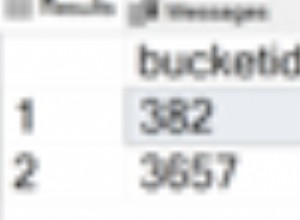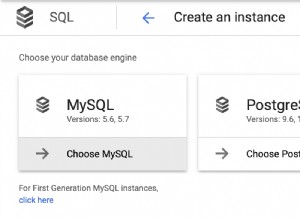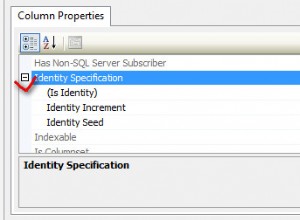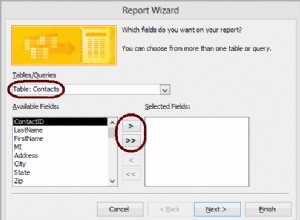veja o exemplo abaixo
SELECT mydate calendar_date
,EXTRACT(WEEK FROM mydate) week_num
,EXTRACT(month FROM mydate) month_num
,to_char(mydate,'Mon') month_name
,EXTRACT(Quarter FROM mydate) quarter_num
,EXTRACT(year FROM mydate) calendar_year
,EXTRACT(DOW FROM mydate) iso_dayofweek
,to_char(mydate, 'day') dayofweek_name
FROM (
SELECT now()::DATE mydate
) t
Resultado:
calendar_date week_num month_num month_name quarter_num calendar_year iso_dayofweek dayofweek_name
------------- -------- --------- ---------- ----------- ------------- ------------- --------------
2015/04/24 17 4 Apr 2 2015 5 friday
Você pode usar
generate_series() para obter todas as datas em um ano, por exemplo:2015 select generate_series(0,364) + date'1/1/2015'
isso produzirá a data de
1/1/2015 - 31/12/2015 , e use esta seleção em vez de SELECT now()::DATE no exemplo dado Se você deseja criar uma tabela para o ano
2015 então você pode usar a seguinte consulta CREATE TABLE mycal_2015 AS
SELECT row_number() OVER () date_key
,mydate calendar_date
,EXTRACT(WEEK FROM mydate) week_num
,EXTRACT(month FROM mydate) month_num
,to_char(mydate,'Mon') month_name
,EXTRACT(Quarter FROM mydate) quarter_num
,EXTRACT(year FROM mydate) calendar_year
,EXTRACT(DOW FROM mydate) iso_dayofweek
,to_char(mydate, 'day') dayofweek_name
FROM (
SELECT generate_series(0, 364) + DATE '1/1/2015' mydate
) t
e a tabela será semelhante a
select * from mycal_2015 date_key calendar_date week_num month_num month_name quarter_num calendar_year iso_dayofweek dayofweek_name
-------- ------------- -------- --------- ---------- ----------- ------------- ------------- --------------
1 2015/01/01 1 1 Jan 1 2015 4 thursday
2 2015/01/02 1 1 Jan 1 2015 5 friday
3 2015/01/03 1 1 Jan 1 2015 6 saturday
4 2015/01/04 1 1 Jan 1 2015 0 sunday
5 2015/01/05 2 1 Jan 1 2015 1 monday
6 2015/01/06 2 1 Jan 1 2015 2 tuesday
...
.
.
.
364 2015/12/30 53 12 Dec 4 2015 3 wednesday
365 2015/12/31 53 12 Dec 4 2015 4 thursday
POSTGRESQL:FUNÇÃO DE EXTRAIR
A função de extração do PostgreSQL extrai partes de uma data
Sintaxe:
extract( unit from date )
date é um valor de data, carimbo de data/hora, hora ou intervalo do qual a parte de data deve ser extraída.
unidade é o tipo de unidade do intervalo, como dia, mês, minuto, hora e assim por diante
Pode ser um dos seguintes:
unit description
--------------- -----------------------------------------------------------------------------------------------------------------------------
century Uses the Gregorian calendar where the first century starts at '0001-01-01 00:00:00 AD'
day Day of the month (1 to 31)
decade Year divided by 10
dow Day of the week (0=Sunday, 1=Monday, 2=Tuesday, ... 6=Saturday)
doy Day of the year (1=first day of year, 365/366=last day of the year, depending if it is a leap year)
epoch Number of seconds since '1970-01-01 00:00:00 UTC', if date value. Number of seconds in an interval, if interval value
hour Hour (0 to 23)
isodow Day of the week (1=Monday, 2=Tuesday, 3=Wednesday, ... 7=Sunday)
isoyear ISO 8601 year value (where the year begins on the Monday of the week that contains January 4th)
microseconds Seconds (and fractional seconds) multiplied by 1,000,000
millennium Millennium value
milliseconds Seconds (and fractional seconds) multiplied by 1,000
minute Minute (0 to 59)
month Number for the month (1 to 12), if date value. Number of months (0 to 11), if interval value
quarter Quarter (1 to 4)
second Seconds (and fractional seconds)
timezone Time zone offset from UTC, expressed in seconds
timezone_hour Hour portion of the time zone offset from UTC
timezone_minute Minute portion of the time zone offset from UTC
week Number of the week of the year based on ISO 8601 (where the year begins on the Monday of the week that contains January 4th)
year Year as 4-digits
Observação:a função Extract se aplica ao PostgreSQL versão 8.4 e superior
Funções e operadores de data/hora
generate_series()




